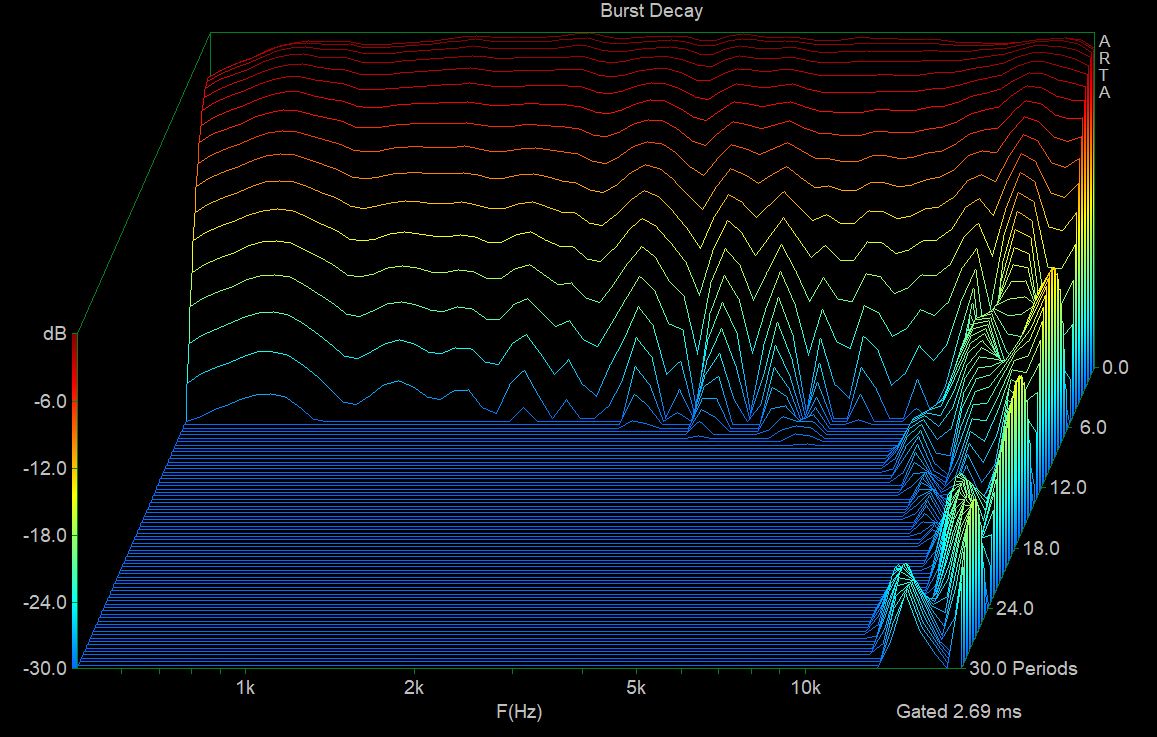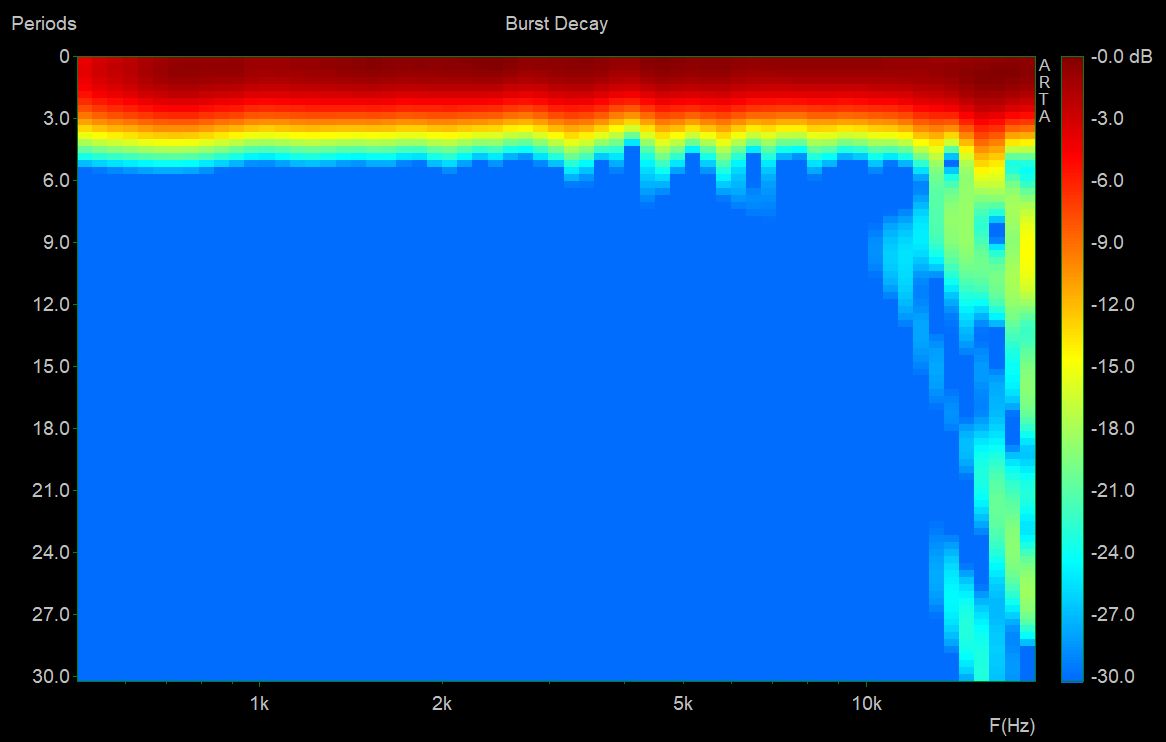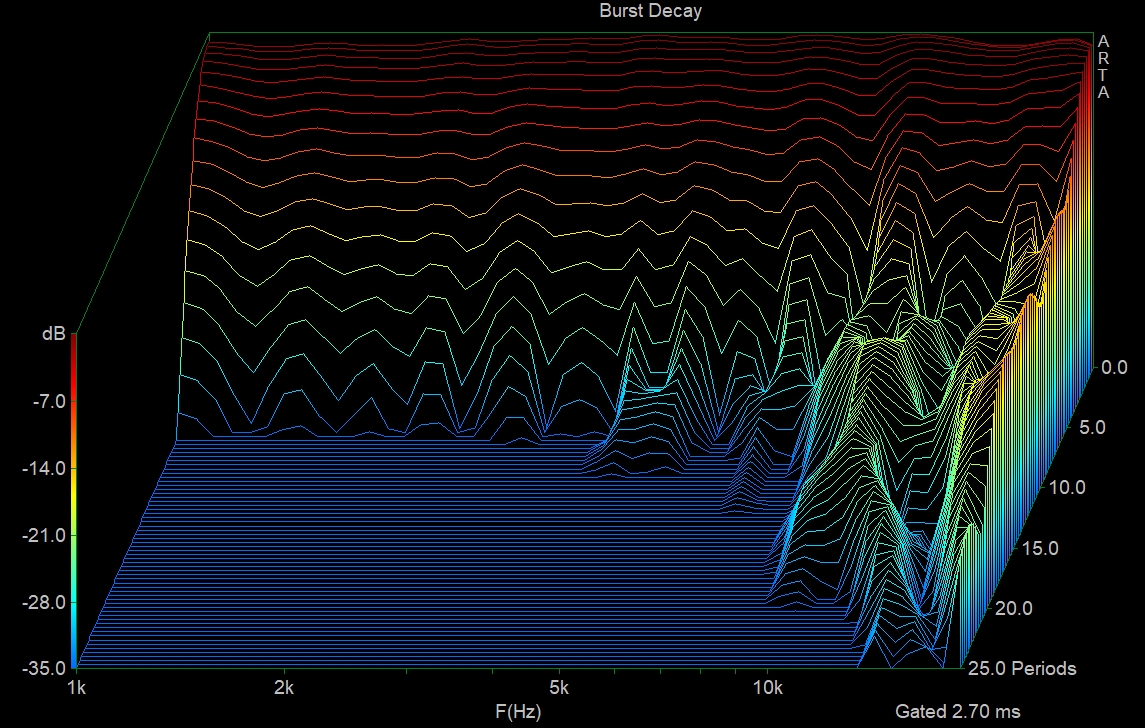1.4 inch compression drivers test, FaitalPRO vs 18Sound
The 1.4 Compression Drivers
We will test several 1.4" exit compression driver in this article:
- 18Sound ND3ST-16: 3 inch titanium diaphragm
- 18Sound ND3SN-16: 3 inch Nitrided titanium diaphragm
- 18Sound ND3A-16: 3 inch Aluminium diaphragm
- 18Sound 1480N: 3 inch Nitrided titanium diaphragm
- 18Sound 1460: 3 inch titanium diaphragm
- FaitalPro HF1440-8: 3.4 inch Ketone annuar diaphragm
- FaitalPro HF1460-8: 3.4 inch TeXtreme (woven carbon) diaphragm

For interpreting results about break-up, it is advised to read the breakup article.
In essence: Stiffer materials, like metals, will exhibit a higher but more violent break-up point, while materials with inherent damping, like treated paper or composites (Ketone), will break up at a lower frequency but affect a wider range of frequencies.
It’s all a mater of compromise, the larger the diaphragm is lower he can goes (theoretically) and the sooner the breakup will occur.
The horn used for testing is a X-Shape X34 with his return for doesn’t be impacted with midrange narrowing or beaming.
SPL
Here is the SPL alligned on 1kHz witout EQ of crossover
On X-Shape X34:
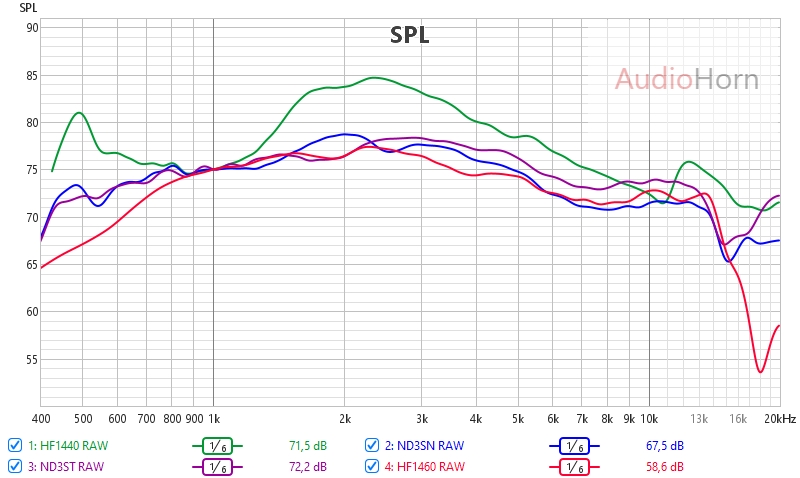

Here there is no “more” or “less” of something, the drivers gives an initial energy then the horn distribute as we have explained it here : Energy in horns.
If a driver was flat it will simply mean that the horn is not constant, exactly what we do not want.
So the “bell” response is normal, the only strange things is the end of the response of the HF1440 (Keton), but we will see that will give she a huge advantage on another type of mesurement.
The low end of the HF1460 (Carbon) show that she don’t want to go down but for a passive crossover it can be an advantage.
In addition, the HF1440 (Keton) have show almost the exactly same response on a RCF 950, as we have said upper, if the coverage is constant and similar beetween severals horns (X-Shape X34, M-Shape, RCF950…) the on-axis response will always remain the same.
The compression driver adapted to an horn is more a myth than otherthings, however we can adapt compression flare to the horn (all compressions are slow flare ones here).
But as energy will always remains the same, no changes should be expected.
The main juge here will be the distortion measurement after have EQ it flat.
Time-domain measurements
Here we will do Burst Decay at 32cm of the mouth with all driver EQ flat, we will see here the breakup impact on Time-domain measurement.
There is pro and cons here, compromise, as always in audio, The two 18Sound perform well (3" diaphragm), the HF1440 breakup soon as it’s a Ketone 3.4 diaphragm, I was excepted better from the HF1460 and his TeXtreme Carbon diaphragm.
The 3.4" ketone of the HF1440 have his breakup at 12khz, but nothing else and we will see that it will have an impact on other measurements.
Distortion
Here is an overlay of all the compression drivers, the measurement is taken at 31.5cm to the horn mouth, every driver is EQ flat, the volume is 95 dB SPL (so the dB at 1m).
Initially the ND3SN has a dust in the voice coil that I removed, this kinds of things degrade performances, I keep the measurement in black for comparaison purpose.
A point about audiblity
Our article about audibility and masking effect has explain that a H2 distortion will create a sound at Fr*2, and a H3 at Fr*3.
So some high frequencies rise up in H2 are in fact not audible, we have to put our attention at the low end to the half part of the measurements.
H2
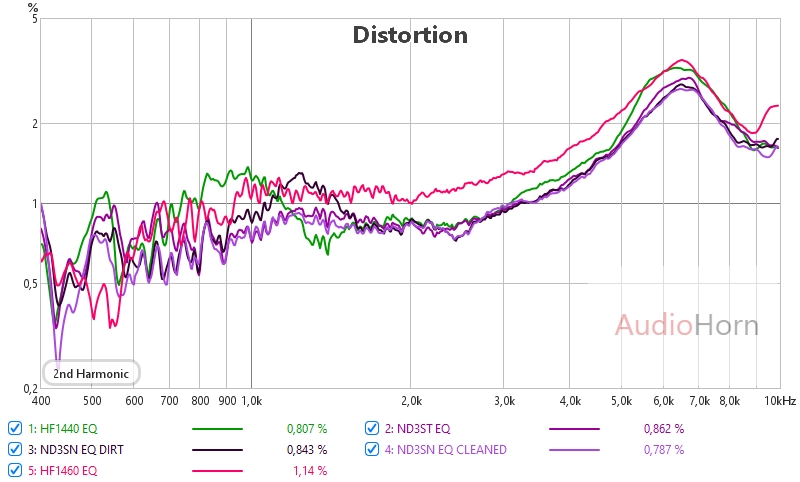
The 18Sound are partculary good here, the two Faital a little less but everybody is bellow 2%, so almost not audible.
H3

Here we see the huge advantage of the 3.4" Ketone of the Faital HF1440, is goes low without forcing, at the reverse, as the 1460 don’t want to go down, we can see in comparaison more H3 at low end.
The two 18Sound ND3 are almost the same, they pass the 0.2% of H3 that begin to be audible, it’s the limit but it logic for a 3" diaphragm.
Some differene can just be the distance with phase plug, we will seen in others test that can change a lot of things and it’s not necessary well tuned at the out of the factory. moreover there is manufacturing tolerance that can explain some differences here, even with two identicals drivers we will not have the exact same result.
Polar Plot
Why show polar on different driver?
A horn starts from the principle that the compression driver is a perfect plane wave radiation on his exit.
But the breakup put the driver out of plane wave radiation as we have seen in breakup and his distortion.
By analysing the moment when breakup occurs on a perfect wave propagation horn as the X-Shape X34 is we can detect when and how breakup affect wave-front propagation in the horn, and by deduction the quality of this propagation and the respect of plane wave radiation.
Polar on X-Shape X34







Polar conclusion and breakup impact
Here the logic is well respected, more the diaphragm is Stiffer (“hard”) more the breakup will bring the wavefront too far from plane wave radiation and enter in an impredictible chaotic behavior.
The HF1440 (Ketone) is incredible for a 3.4" diaphragm, she acte like a good 1" one and his breakup almost doesn’t affect it’s plane wave expansion at 12 kHz.
Conclusion
As always it’s hard to give a winner as we have taken the most advanced 1.4" drivers of the market.
While I was hoping for even more impressive results from the HF1460 and its TeXtreme diaphragm. It will be interesting to see how TeXtreme (or other Carbon) diaphragms compare to Beryllium options, particularly TAD’s vaporized Beryllium, in the future.
But we can give some orientations:
The Faital HF1440 (Ketone) is interesting, the only downside is the H2, due to annular diaphragm the emissive surface is lower than others, it’s very classic with annnular diaphragms, they are very good in H3/5/7/9 but not in H2 due to the need to moove more for the same SPL level.
18Sound 1480 and 1460 are good in high frequency Time-domain behavior and high SPL, for high demanding SPL the 1480 is recommended (Night-Club).
For 1" test see our another test: 1" compression driver test.












